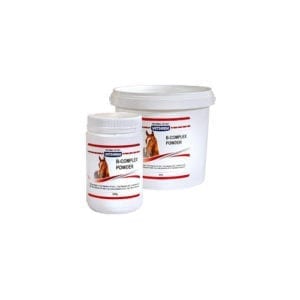Description
Key Features
- Like Mother’s Milk – formulated to match the composition of bitch’s milk
- High in Energy – elevated fat content required for growing puppies
- Easily Digested – Low in lactose and carbohydrates to aid in digestion
$43.00
Milk substitute for all dog breeds. Use for orphaned puppies or when mother’s milk is limited.
Whole milk solids, whey protein, casein, vegetable oils, omega-3 & 6 fatty acids, taurine, vitamins A, B1, B2, B3, B5, B6, B9, B12, C, D3, E, K, biotin, folic acid, choline, calcium, phosphorus, potassium, sodium, magnesium, zinc, iron, manganese, copper, iodine, selenium.
| Protein | 34% |
| Fat | 37% |
| Ash | 5% |
| Moisture | 4% |
| Energy (ME) | 23 MJ/kg |
Use Dog Milk Replacer for orphaned puppies or when mother’s milk is limited. Newborns that did not receive colostrum from the mother may benefit from Impact Colostrum Supplement.
To make 30mL of milk: Mix 1 level scoop (6.5g) of powder with 25ml of warm water.
To make 1 litre of milk: Mix 215g of powder with 850ml of warm water.
Add about half the water to the powder first and mix to a paste. Then add the remaining water and mix thoroughly. Pre-boil the water to ensure it is sterilised. If the water is too hot it can cause the milk to curdle. If it is too cold then it will be difficult to disperse the powder. An electric whisk can be used for mixing larger quantities. Milk can be stored in the fridge for up to a day or can be frozen for up to 2 weeks. It is useful to make milk up in larger volumes, and store it frozen in small portions (e.g. ice cube trays), so that the required daily feed volumes can be easily thawed out. Once thawed out, discard any unused milk, and wash feeding utensils thoroughly.

Warm milk to about 35°C. Feed from a bottle with teat, an SD Teat or LD Teat is recommended for small and large breeds respectively. For some breeds an F Teat Teat may be used. In emergency cases tube feeding may be required. Feed every 2 hours for the first 3 days, reducing this to every 4 hours by week one and every 6 hours by week two. Stimulate puppies to defecate and urinate after each feed. Encourage puppies to lap once their eyes are open and voluntary bowel motions begin. To avoid dehydration during periods of hot weather give drinks of pre-boiled water between feeds. Always provide access to drinking water once puppies eyes are open and they become active. Consult your veterinarian or breeder for particular advice about caring for your breed of puppy.
Different breeds of puppies have different growth rates. Carers should contact their veterinarian or breeder for information about the growth rate of their particular breed. Guidelines for birth weight, weaning weight and average growth rate for various breed categories are as follows:
| Breed | Birth Weight (g) | Weaning Weight (kg) | Average Weight Gain (g/day) |
| Teacup | 90 | 0.5 | 7 |
| Toy | 180 | 1.0 | 15 |
| Small | 250 | 1.4 | 20 |
| Medium | 300 | 3.2 | 50 |
| Large | 450 | 8.0 | 135 |
| Giant | 700 | 10 | 170 |
Consistent weight gain is an indication of good health. It is important to weigh puppies regularly to verify growth rate and to determine daily feed volumes. Overfeeding milk can cause diarrhoea so feed the suggested volumes in our tables.
When puppies are about 4 weeks old they should show interest in solid food. To entice them to eat solids offer a small portion of specially formulated puppy dry food soaked in milk. Once they start to eat solid food continue to increase the solids and reduce the milk in their diet until they are fully weaned at about 8 weeks.

© 2026 Southwest Stockfeeds. All Rights Reserved. Website designed by Simple Pixels, Wagga Web Designers
Sending...

